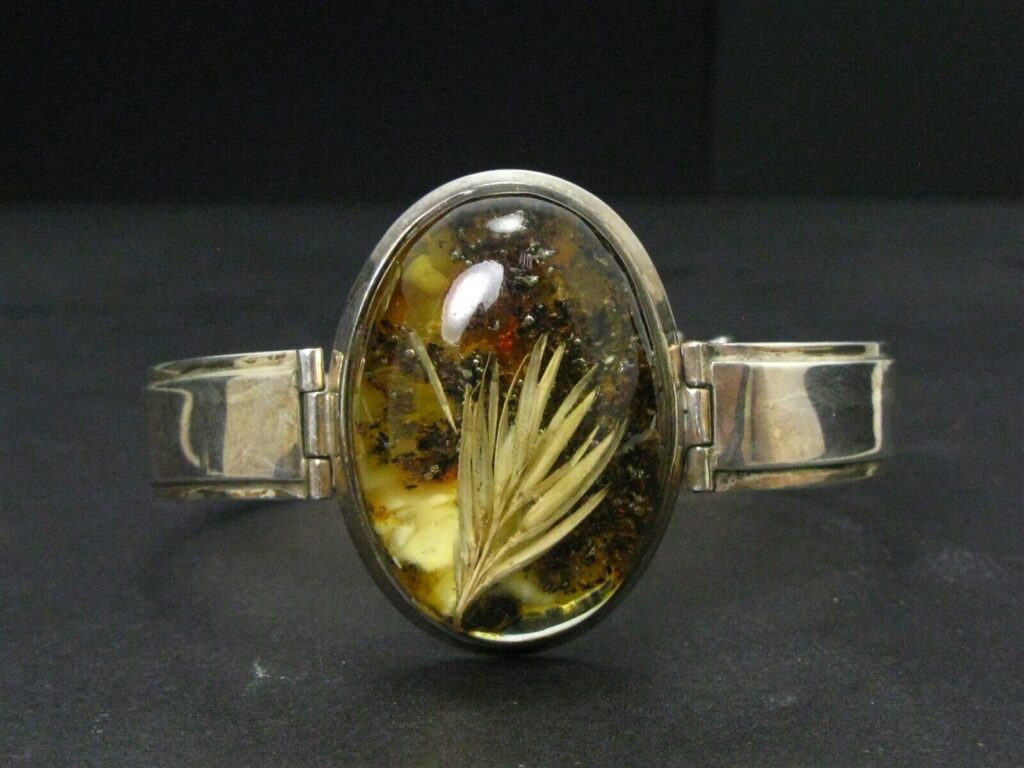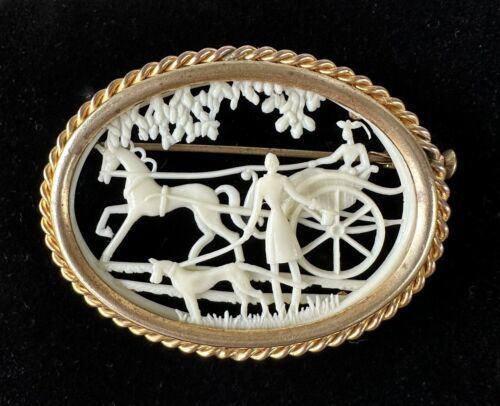#Signs #Unmarked #Costume #Jewelry #Europe #WorthPoint

Time and again, I’ve run across unmarked pieces of costume jewelry that just didn’t fit the mold of the classics produced in America but perhaps resembled those in Europe. Sometimes, I’d purchase these things in auction lots or estate sale goodie bags, but other items were individual pieces that intrigued me when I was shopping thrifts and fleas. The findings, materials, and even the designs were unlike what I typically purchased for my collection or my inventory, but amazing nonetheless.
It took some book research, online digging, and discourse with other collectors more well-versed in European designer jewelry to figure out what some of these unmarked pieces were made of and where they originated, but it was well worth the effort. I’ll share a few things I’ve learned that might come in handy for you as well.
Examine Unmarked Jewelry for Unique Findings
Earrings
When looking at the jewelry made by American costume jewelry manufacturers, you’ll run across some of the same types of clips, clasps, and hooks used repeatedly. Was there some overlap between findings used in the United States and those used in other parts of the world? Absolutely. Let’s take earring backs as a prime example. Collectors have come to call one of the most widely used types of Schreiner clips “donut hole” backs. They aren’t typical little paddles with a small hole in them; they have a completely circular top and were used by Austrian manufacturers as well.
Some other earring backs are more unique to Europe. For instance, French companies used (and still use) a particular type of curving earring clip often found on Chanel styles dating to the ’90s, but I’ve seen those on pairs of unmarked earrings sold even more recently by Francoise Montague and other brands, too. Earrings made in the workshop of Max Muller in Germany sometimes have a heart-shaped hole in the clip back, which can also indicate the origin. Earrings produced by Louis Rousselet’s business in France have a single round wire for a clip back. So, if you notice anything unusual about a pair of vintage clip earrings, it’s worth looking into.

Brooches
One of the first uniquely European brooch fasteners I learned about was the trombone clasp. These tubular clasps—also referenced as push-pull safety clasps—have a small button on the top that one pulls to release the clasp. They were patented in England in 1850 and used on fine jewelry for decades. But in my experience, most of the costume jewelry made utilizing these clasps was either made in France or made to be sold there. For example, I once purchased a brooch marked in only “Tchécoslovaquie” in French, indicating the piece was made in Czechoslovakia for sale in France.
I’ve traced other unmarked pieces with trombone clasps to the workshop of Roger Jean Pierre in the 1940s/1950s era. Others were used decades later by French companies like Pierre Bex on pieces inspired by art deco designs produced in the 1970s and 1980s. I’ve never owned a piece of unmarked costume jewelry with a trombone clasp that I felt was made in America.
Necklaces and Bracelets
Necklace and bracelet hooks and clasps can also provide clues. However, remember that many companies in Germany and elsewhere used push clasps and hooks similar to those on American-made styles. In fact, some jewelry made in the United States, including a few charm bracelets made by Napier in the 1950s, were produced with findings marked Germany, according to The Napier Co. by Melinda Laird Lewis. Other companies used components made elsewhere as well.
The overall style and construction techniques will help you distinguish the origin as you research your finds.
Watch for Handmade Glass Components
Rare glass components can take the form of beads, cabochons, or shapes like leaves and florets. You can tell they are handmade because even though the elements might look similar at first glance, no two are exactly alike. Many American costume jewelry companies used machine-molded imitations to create European-inspired designs. For example, Trifari’s flower petals in metal frames dating to the early 1950s are molded glass components that get confused with poured glass.
And speaking of confusion, now we come to Gripoix. Most of the glass used in jewelry was not made by the House of Gripoix. However, if you find either items with delicate leaves and petals made of colorful glass or glass that truly does look like it was poured directly into metal segments soldered together, it could be a rare designer piece made for a couturier by Gripoix.
Louis Rousselet’s workshop also made other French jewelry containing handmade glass. The beads and cabochons produced there are often quite colorful and were used in many intricate designs. Many of them can be identified by the wire florets to which they are attached, but the wire loop ear clips and necklace clasps adorned with single handmade glass cabochons are also indicative of Rousselet pieces.

Look for Obscure, Unfamiliar Marks
When closely examining your costume jewelry finds, you’ll need to watch out for a few marks that don’t have anything to do with a manufacturer. For instance, you might find the words deposé or breveté on a piece of jewelry made in France. German jewelry can be marked geschutzt or dep (short for deponiert). These are all just ways of indicating that a design is patented or copyrighted.
I also recently came across a sterling silver and amber set of jewelry with teeny tiny British assay marks that I almost overlooked. Those marks not only told me the origin, but I was able to determine that the set was made in the 1990s by looking at them.
If you’re like me, you probably won’t encounter this type of jewelry often. But learning about unmarked costume jewelry originating in Europe can net some great finds, so it’s certainly a topic worth a wade to begin with. Then, you can decide if a deep dive is in order.
Pamela Siegel is a freelance writer and author who has been educating collectors for more than two decades. In addition to three books on topics relating to antiques and collectibles, she frequently shares her expertise through online writing and articles for print-based publications. Pamela is also the co-founder of Costume Jewelry Collectors Int’l (CJCI) and the proprietor of Chic Antiques by Pamela.
WorthPoint—Discover. Value. Preserve.




